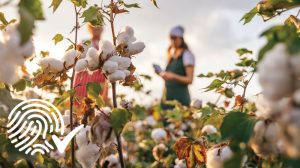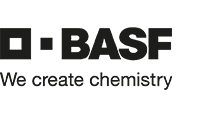 By Mike Sellers
By Mike Sellers
The Super Bowl is a genuine cultural phenomenon. According to Nielsen, Super Bowl LVII drew 113 million viewers across Fox’s television and digital properties, making it the third-most-watched television program of all time. According to the National Retail Federation, Americans spent more than $16 billion on Super bowl-related purchases in 2023, with 103 million people — nearly one-third of the U.S. population — hosting or attending a Super Bowl party themselves. It’s kind of a big deal.
Even for casual fans, the Super Bowl is an excuse for friends and family to gather in celebration. Whether your favorite team made the big game or you’re simply celebrating the event, you’re ready for some quality gear to go with it — that commemorative shirt, jersey, jacket, sweatshirt, or shorts, adorned with officially licensed logos, and possibly the name and number of a favorite player.
To get it, you’ve probably gone online, offered a selection of clothing and styles to choose from. You chose your favorite product from a limited array of options, paid for it, and a few days later received it, shipped from a massive inventory of the exact same product
Very soon this experience will be completely different. The creation of a product that is unique to you will be in your hands. You’ll be able to choose not only the player, team, or event you want to commemorate, but also a variety of customization and personalization possibilities. Do you want to display the final score, or a key play accompanied by a photorealistic image of your choice taken from the game? It’s possible, and maybe even the next day.
Your imagination is the only limit to what you can wear, thanks to the ability to provide customized products through a network of on shore suppliers. And always with the guarantee that the garment has been manufactured using responsible and environmentally friendly production practices, saving water, energy, and materials to provide exactly the piece you purchased, without waste.
This is the power of mass customization enabled by a digitized marketplace, complemented by a digital execution ecosystem. This is the value of direct-to-garment printing — a comprehensive, sustainable, on-demand, digital process, one that eliminates overproduction, consumes up to 95-percent less energy, nearly eliminates water waste, and reduces greenhouse gas emissions by more than 80 percent compared to traditional analog production.
The Digital Difference
Sportswear production has long been limited by the time it takes to design, produce, and ship clothing. At major sporting events, stories abound of manufacturers producing clothing to meet every possible outcome, knowing full well half of that stock will be thrown away when one of the “champion” teams inevitably loses.
With most traditional production methods, rapid demand for clothing requires predicting what fans will want to buy and where they will want to buy it, which necessarily leads to overproduction.
Furthermore, producing to build inventory overlooks a significant — and growing — profit opportunity in a market where consumers are conditioned to satisfy wants and needs instantly, without restrictions or compromises.
Just like the inkjet printers we use in the office and at home, state-of-the-art digital direct-to-garment printing systems eliminate these constraints by simply printing the media — in this case, a blank garment made of cotton, polyester, polyester blend, or any other common fabric for fan clothing — at the press of a button. After drying, the piece is ready to ship or wear in minutes.
Unlike screen printing, this process requires virtually no preparation time, can reproduce an unlimited range of colors on a single piece and generates profits from the production of a single copy: no minimum order quantities, which is ideal for personalization. Unlike heat transfer vinyl, you don’t stock up on media for every possible application: forget about inventory, storage space and wasted paper by reproducing a digital asset to suit your needs. Unlike sublimation, this technique is not limited to white polyesters and does not generate paper waste. Unlike direct-to-film printing, there’s better feel and greater product consistency, even for larger graphics applications, while avoiding the tedious manual process that operators hate.
With single-step, single-operator direct-to-garment printing systems, producers can replicate and improve each process, and even mimic embroidery and add layered 3D applications, on a single machine. The technology is compatible with polyester and poly-blend materials, providing durable and reliable applications on fabrics essential for sportswear, fan merchandise, and casual wear markets.
Efficiency And Agility Win The Game
On-demand digital production means delivering more profitable products by reducing time, labor, materials, and floor space: an ideal recipe for growing print businesses and ensuring the agility needed to respond real time to unforeseen market dynamics. These could be supply chain disruptions, inflation, labor shortages, socio-political unrest, a global pandemic — or a sudden product opportunity generated by company performance, a team or athlete during a given match or tournament, such as Super Bowl LVIII.
Additionally, a growing ecosystem of DTG-equipped producers stand ready to offer localized fulfillment on a global scale, eliminating time and logistics associated with offshoring production. A digitalized workflow not only ensures transparency and accountability of production, from point of sale to shipping of finished products. But it brings closer to the consumer, who has tools for creation and increasingly efficient customization tools to bring his inspirations to life, from the producer best equipped to quickly respond to this need, with durable, high-quality, and uncompromising clothing. It’s a victory for fans, for producers, for brands and licensees, and for the environment.
Sustainable, on-demand digital production is transforming the sports and fan apparel game, and if you’re ready to win, build your digital fulfillment strategy now to:
- Stop producing gear that won’t sell. With digital, go from anticipating demand to fulfilling it. Make the sale and produce ready-to-wear apparel just in time.
- Give fans a unique, engaging experience. Empower sports fans to create their own designs, personalize gear, or choose their own graphics or events.
- Achieve responsible, sustainable production. Leverage nearshore fulfillment and networks to cut waste (and risk) associated with global transport. Adopt consistent, eco-friendly production to yield higher margins with less time, labor, energy, and production footprint.
- Unleash creative expression and grow business. Today’s DTG capabilities consolidate screen, dye sublimation, vinyl, embroidery, 3D, and other graphic effects to one single-step, single-operator production system. Increase production capacity and capability exponentially and scale your operation with confidence.
When you watch the big game in the comfortable, durable, digitally printed garment you’ve long dreamed of, you’ll also be a fan of this game-changing technology.
Enjoy Super Bowl LVIII this February 11th and visit Kornit.com or PixelToParcel.com to learn about its vision of transforming fanwear, team gear, licensed apparel, and athleisure garments with responsive, versatile, sustainable, on-demand digital decoration.
Editor’s Note: Mike Sellers is POLY Category Manager at Israel-based Kornit Digital
February 8, 2024












